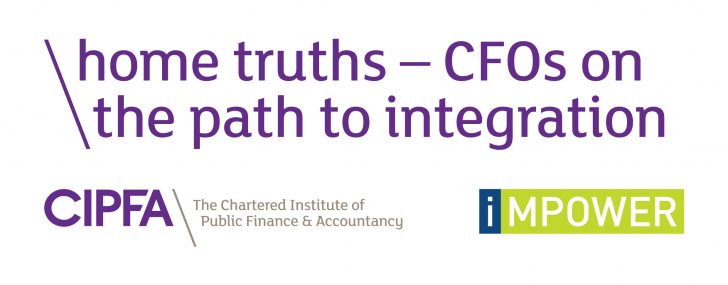Relieving pressure on acute beds and improving outcomes in Lincolnshire
Relieving pressure on acute beds and improving outcomes in…


We’ve been talking about integration since before I was born – and believe me, I’m no spring chicken – yet the path just to collaboration and joint working has been painstakingly slow. Will we navigate the obstacles to realise the opportunity at the interface to deliver better outcomes for less in my lifetime, or will the growing pressure on organisations and services get in the way?
Rather than endlessly hypothesising about this, we recently joined forces with CIPFA to find out what Finance Directors across Health and Local Authorities think about integration – and the results were fascinating.
There was almost unanimous agreement that the sustainability of their organisations’ services relies on genuine collaboration across health and social care, with less than 10% regarding it as a minor factor, and over 90% seeing it as very important. Respondents believe that not only will this improve patient experience (90%) and lead to better quality care (70%), but were also surprisingly bullish about the prospects for cost savings, both inside their own organisations (54% foresee such savings) and across the local system as a whole (where 76% believe they will be seen). 44% are also positive about the prospects of reducing demand. That suggests – as is very much consistent with STPs – that while integration may not in itself save money, it is seen as one of the key enablers of the transformative actions which could do.
This is all very positive so far, and it gets better – most respondents expected to move into Accountable Care, and there was a unanimous view that new models of care will enable such joint working, so there is a virtuous circle of reinforcement in prospect.
So surely we should just get on with it? Yes – but only 2% of respondents believe that integration and the resultant benefits will be achieved within five years, with the vast majority saying ‘maybe in pockets’.
So what’s the problem?
Well…integration is about successful partnership working and this depends on good relationships. Less than a quarter of respondents consider current relationships between the NHS and local authorities to be ‘very strong’, with rather more believing them to be ‘limited’. This is despite a more positive general view that relationships have got better over the past year, an improvement which can’t be put down to the STP (75% felt their STP had resulted in relationships staying the same or getting worse).
Furthermore there is a burning need for investment to support integration and a clear message in terms of where we should invest. 95% say it is essential or important to invest in prevention in the next three years, alongside further investment in social care, community services and proactive care. Yet when we look at how the ‘extra £2bn’ is being spent, we can see the focus is almost entirely on propping up services or operational issues (almost 100% of respondents referenced either ‘closing a financial gap’ or DTOC).
In conclusion, Finance Directors understand the issues and are aligned about where the investment needs to be – indeed, there was little difference between Health and Local Authority views. There are some inevitable and pretty big challenges in terms of funding and incentives, and in the middle of this, the most crucial relationships aren’t in place.
Abandon ship? Certainly not – the alignment between Finance Directors gives us a strong foundation to work with, and the fact that they believe that relationships are ‘improving’ is also extremely positive. Most fundamentally we have the opportunity to deliver better outcomes for less. We can’t eat the elephant all at once but if we can find some ‘win, win, wins’, take some brave system steps and invest some time in those relationships we might just make some big leaps forward.
Read more related content from across the site, including in-depth reports, project case studies and articles.